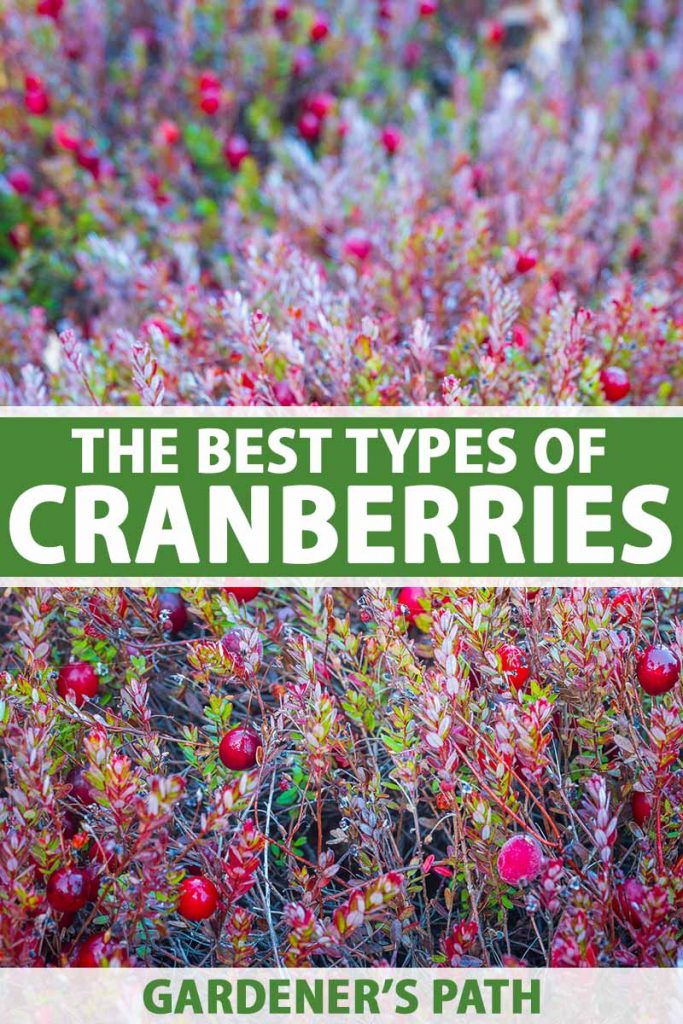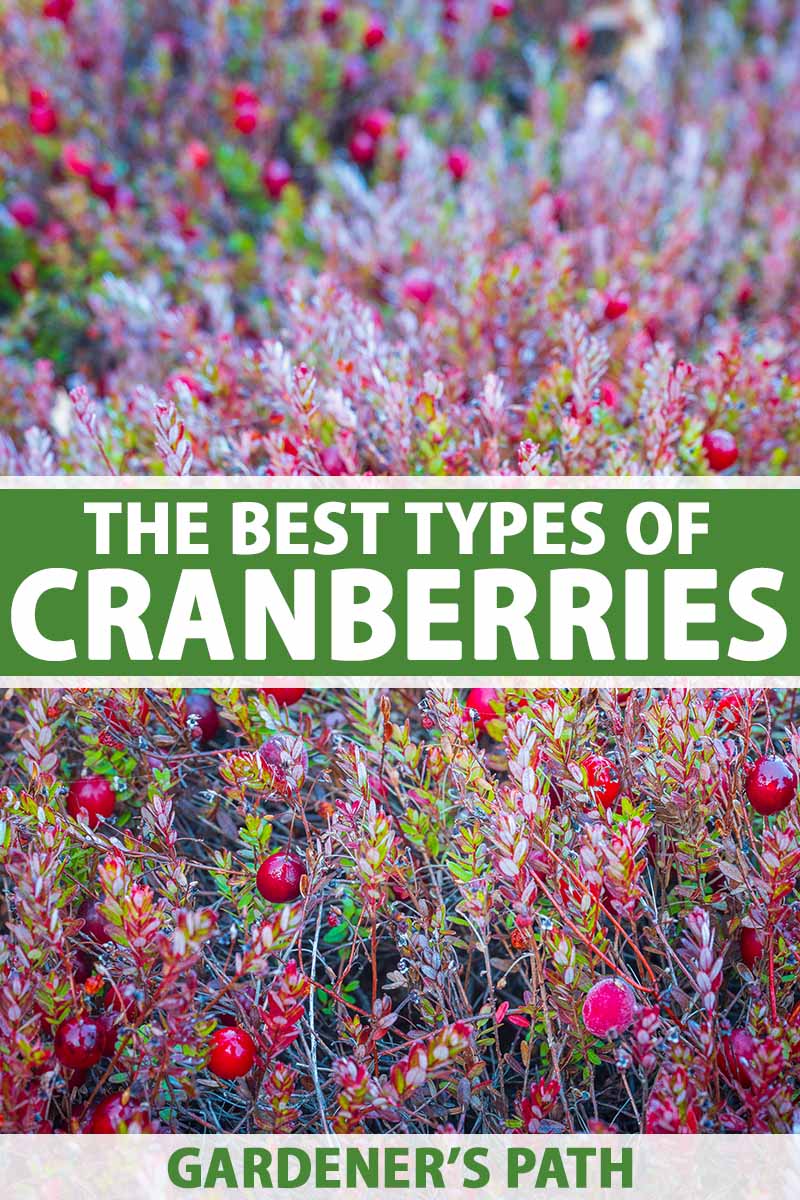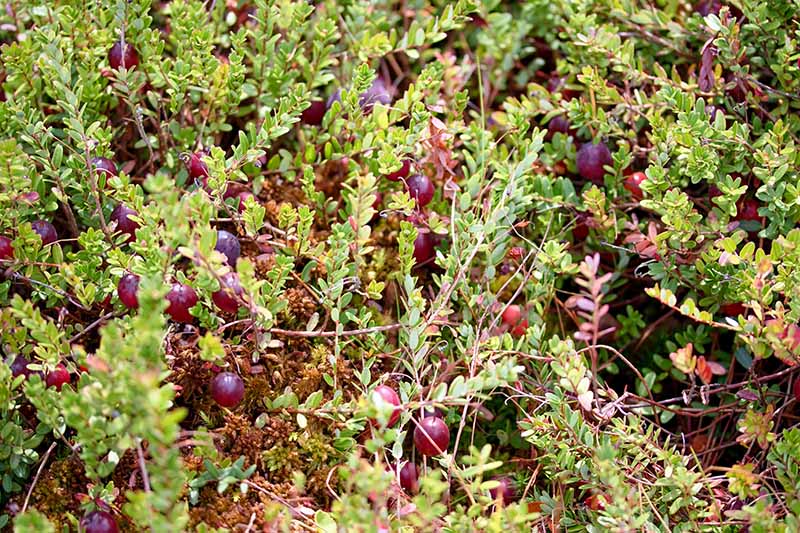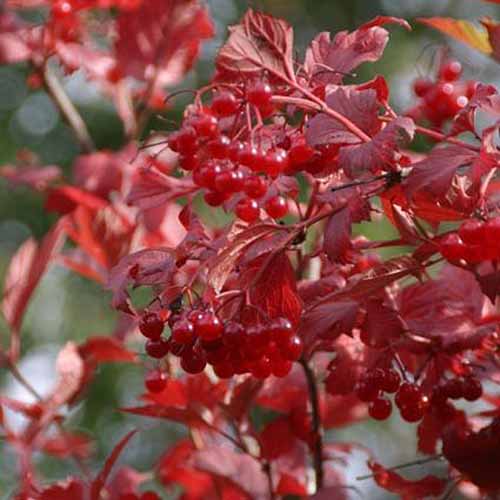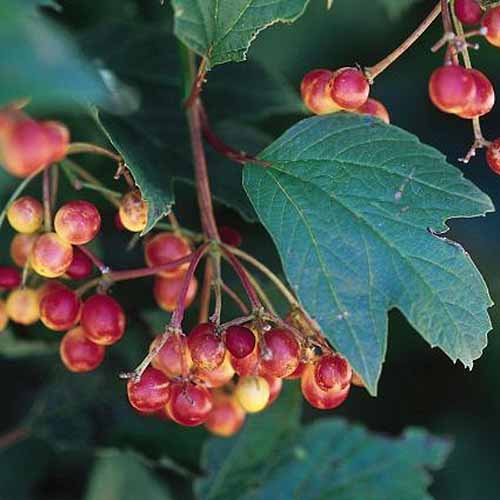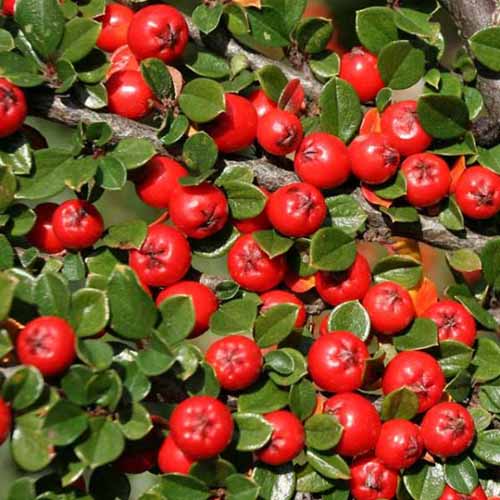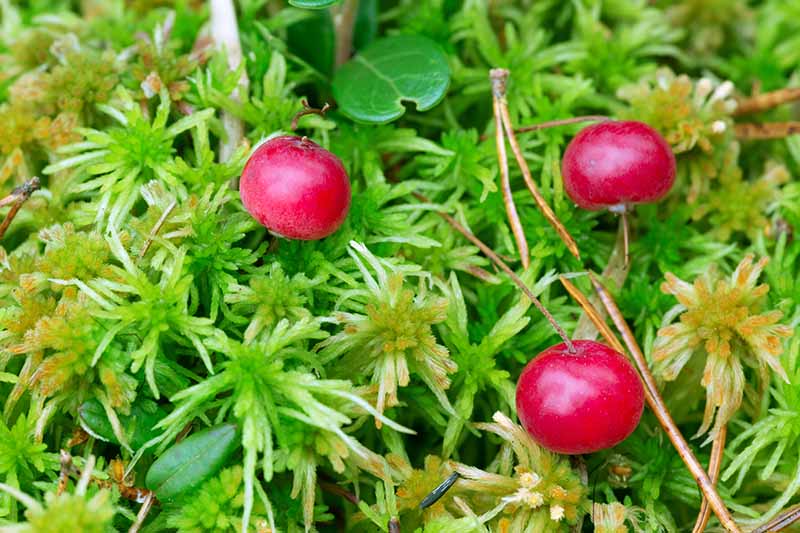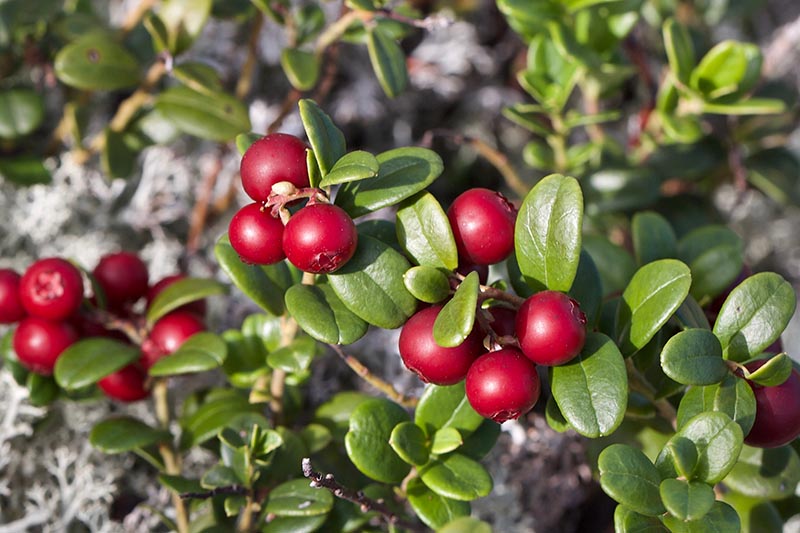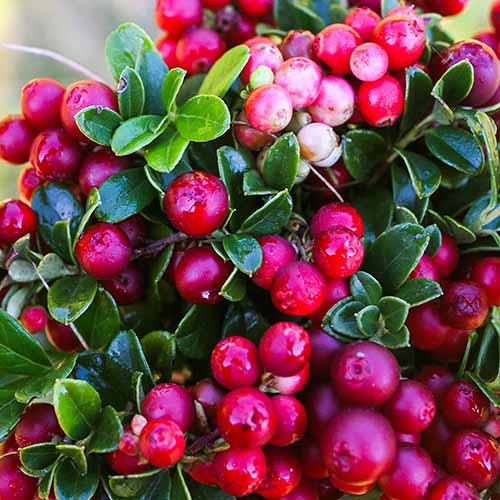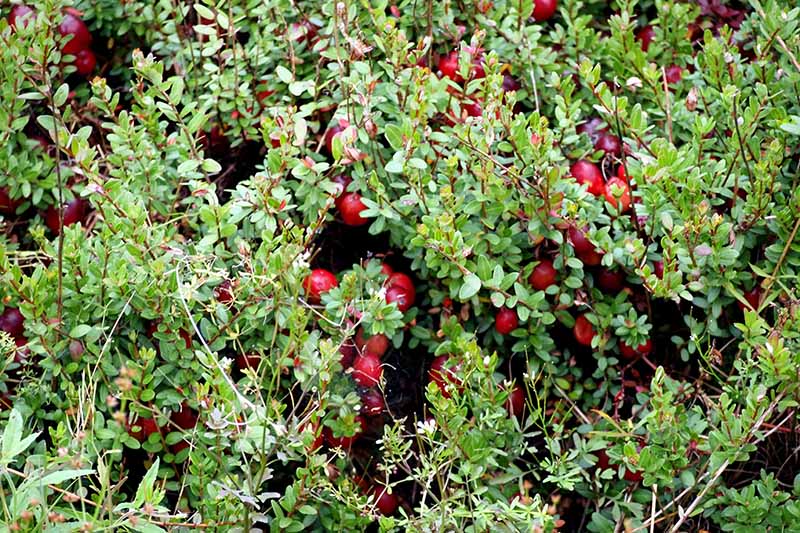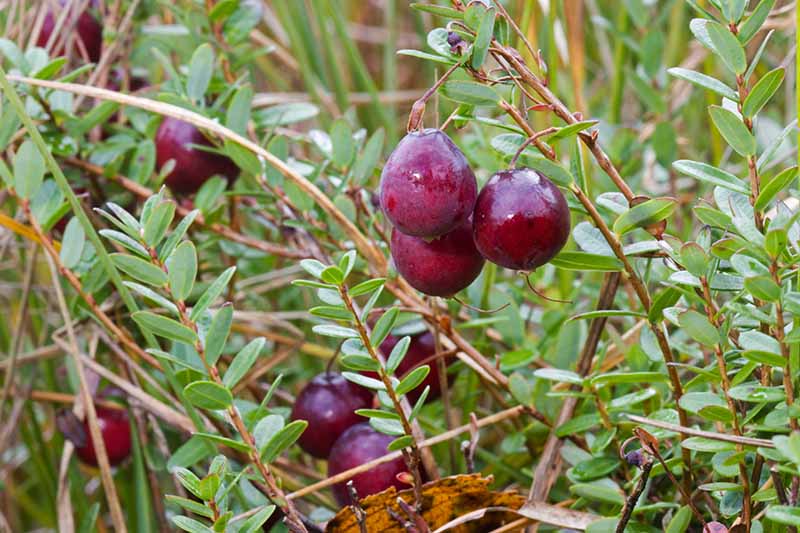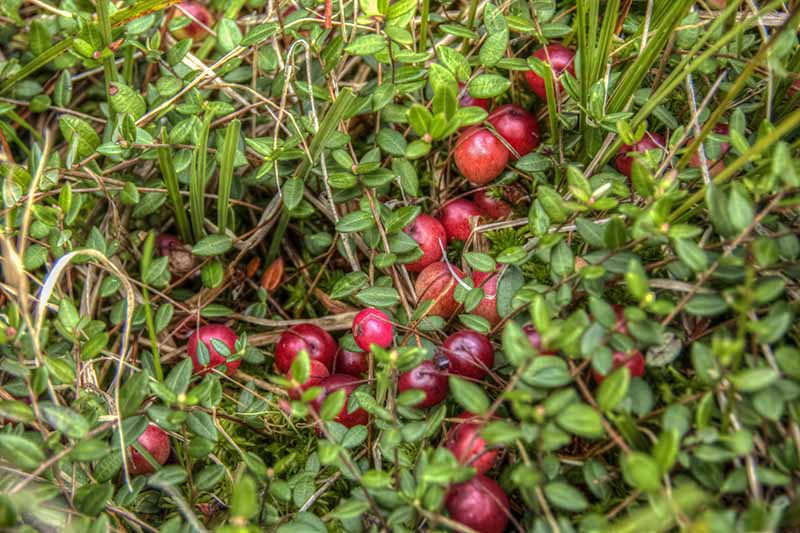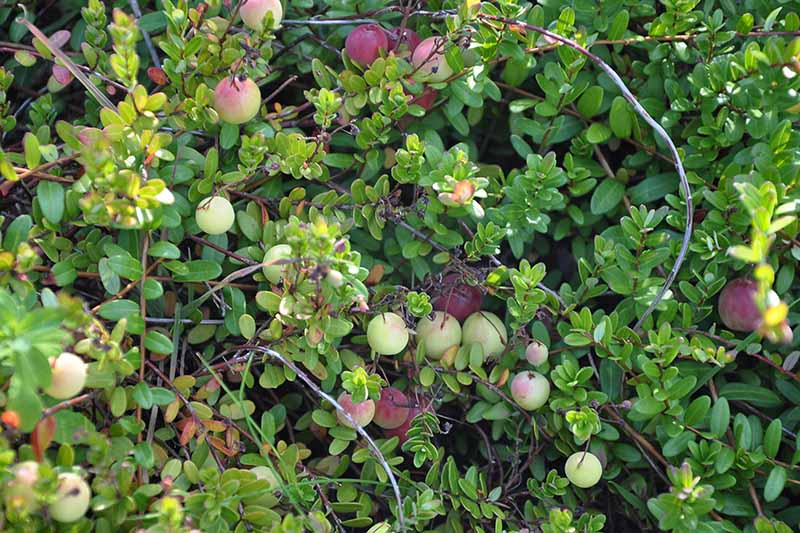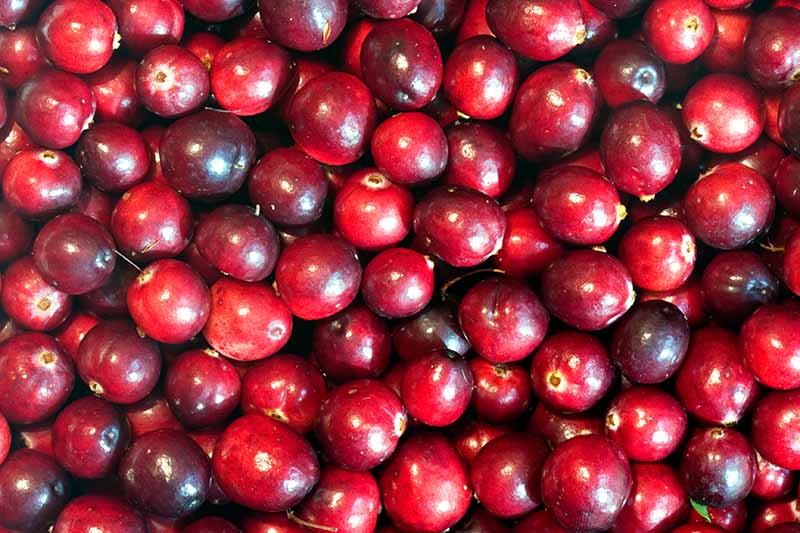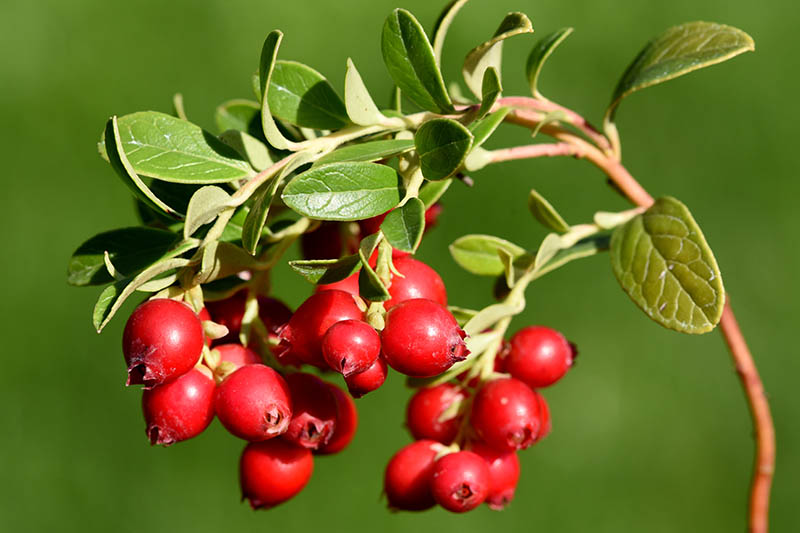Though dried cranberries often feature in granola blends and baked goods, and the juice is popular in combination with vodka and favored by those who suffer from UTIs, the fresh fruit is something that many of us have never experienced, preferring instead to buy a can of the gloppy jelly-like stuff to include with the holiday meal each Turkey Day. And fresh is always better and full of healthy vitamins and nutrients. We link to vendors to help you find relevant products. If you buy from one of our links, we may earn a commission. But I can’t help but wonder each November what it might be like to grow my own cranberries to proudly feature on my harvest table. Though the typical grocery store offerings may suggest something to the contrary, the cranberry is far from generic, with over 100 different named varieties of Vaccinium macrocarpon in cultivation over the years, starting roughly 200 years ago. Though some have been lost to time and others may be a little difficult for home growers to source, it’s not impossible to be choosy. If you live in a cranberry-growing region, with moist and acidic soil in Zones 2-7, I recommend that you seek out your favorite varieties from the following roundup from a trusted local nursery. I’ve also included a few recommended sources here. Here’s everything we’ll cover:
What Qualifies as a Cranberry?
To start, a bit of clarification is needed. As is the case with many plants, there are several different species known by the common name “cranberry.”
Vaccinium macrocarpon is the type most commonly cultivated in North America, and this native species is the variety that we will focus on here. It’s worth noting, however, that the American cranberrybush, a species of viburnum, is also known for producing edible red berries that may be used in cooking, and enjoyed in a similar fashion. Viburnum trilobum, aka Viburnum opulus var. americanum, is best suited to Zones 2-7, and it appreciates well-drained soils and plenty of moisture. This “highbush” plant (sometimes referred to as a tree) has an upright growth habit and it may reach a mature statue of 12 feet, with a matching spread. Clusters of white flowers, somewhat reminiscent of that of the elderberry, bloom in the spring, followed by red fruit in the fall that hangs on through winter. Dark green foliage changes to an attractive red with the change of the seasons.
Viburnum trilobum Plants are available from Nature Hills Nursery. Or, if you’re looking for something a bit smaller, with a mature height of about six feet max, try one of the many compact or dwarf varieties of American cranberrybush.
V. trilobum ‘Alfredo’ V. trilobum ‘Alfredo’ plants are available from Nature Hills Nursery, an attractive option with leaves that emerge red in spring, change to green with the arrival of summer, and turn a dark purplish red in the fall. ‘Compactum’ is another nice dwarf option, with foliage that turns yellow come autumn. You may also come across another unrelated plant that shares a similar common name, the cranberry cotoneaster (Cotoneaster apiculata). This shrub also boasts bright red fruit, but these are not edible (unless you’re a bird). They do offer nice ornamental value, however, as they stay on the bush into the winter. This plant has stiff, tightly packed, arching branches with glossy dark green leaves that change to shades of purple and red in the fall. It may be planted to cascade over a rock wall, as a trailing ground cover, or as a short border plant. This deciduous evergreen has pink blossoms in the spring, followed by the bright red fruit. A member of the rose family, it maxes out at about three feet in height. You can read more about it in our full guide.
Cotoneaster apiculata Suitable for growing in Zones 4-7, potted plants in several sizes are available from Nature Hills Nursery. But, I digress. Let’s get back to the Vaccinium genus, members of the Ericaceae family of evergreen shrubs that are relatives of the blueberry. With a range that spans Canada and the eastern US, V. macrocarpon may be found in the wild as far south as North Carolina. Also known as the true, large, or American cranberry, or sometimes the bearberry, it has large leaves and large fruit that are actually – believe it or not – known to be a bit less tart than that of other species. Speaking of which, there are several other species of berry-producing Vaccinium plants that also go by the name “cranberry.” Though these are less common in gardens and not typically favorited in commercial production, you may see these plants in the wild in their native regions, and the ripe fruit is prime for foraging – if you can beat the local wildlife to it. V. oxycoccos – aka the European, common, or northern cranberry – may be found across a large swath of the North spanning Asia, Europe, and North America. The flowers are dark pink, and both the leaves and fruit are smaller than that of the standard commercial variety – about half the size of what you’d typically find in American grocery stores. The berries are also lighter in color, more of a pale pink. V. microcarpum has a similar range to V. oxycoccos, and yes, that’s right – “micro,” as in small, is a fitting name for this variety. The fruit is smaller, plants produce fewer flowers (and hence, smaller yields), leaves are often smaller, and they may also be triangular in shape. You may also stumble upon V. erythrocarpum, or the southern mountain cranberry. Native to the southern Appalachian Mountains, this plant grows at high altitudes in parts of the southeastern US. Known for having a tasty flavor, this type sometimes goes by the name red huckleberry. Finally, don’t forget V. vitis-idaea, or the lowbush cranberry. Though all members of the Vaccinium genus known as cranberries have a growth habit that’s pretty low to the ground, for whatever reason, the name stuck with this species. Well, it stuck to some extent, in certain circles. You may know this variety as the lingonberry, commonly cultivated in parts of Europe with a suitable climate. Or maybe you’ve foraged for berries in the frozen North of Europe or North America and identified this as the northern mountain, rock, or dry ground cranberry. Or the cow, fox, partridge, or wolf berry, perhaps? Vaccinium vitis-idaea Let’s skip the common names and stick with the standard botanical moniker, shall we? The wild American type (V. vitis-idaea var. minus) is common in Alaska and other points north. The bell-shaped pink and white flowers grow in clusters, the hard evergreen leaves have a rounded shape with edges that are rolled under, and the round red fruit is tart and tasty. With that, the various types that you may come across are pretty well covered. If producing your own crop at home is what you’re after, the true blue (er, red) article is going to be your best bet in Zones 2-7. Let’s take a look at some of the top cultivars next.
9 of the Best True Cranberry Varieties to Grow at Home
You might not be able to find heirloom (aka “heritage wild”) or even hybrid cranberry bushes at your local plant nursery, but specialty growers who sell plants and vines to the public are not unheard of in regions known for producing the tart red fruit.
If you live in a cranberry growing region, it’s worth a shot to take a look. You might even have some luck reaching out to local growers’ associations or farmers for cuttings that you can propagate at home. Commercial production in the US is mostly concentrated in Wisconsin, Massachusetts, Oregon, Washington, and New Jersey, where plant breeders at Rutgers University are known for producing several notable types. This work continues today. In fact, the breeding program in New Jersey is the only modern-day formal program of its kind still in existence, as far as I can tell.
The UMass Cranberry Station in East Wareham, Massachusetts is still active, but its mission is to further the viability of cranberry production in the state via research and public outreach, improving growing practices and opportunities for local farmers rather than breeding new varieties. In previous decades, similar breeding and research programs were active at Washington State University and the University of Wisconsin.
Note that some varieties are only available for sale currently to commercial growers, as is the case for many new varieties of both edible and ornamental plants. Be sure to avoid violating any vine sales agreements. Some newer varieties are patented or otherwise licensed and protected, and this means commercial producers are prohibited from selling cuttings purchased directly from the breeder, or from using them to create their own new hybrids. Keep in mind that if you elect to propagate plants from seed, saving your own seed is not recommended unless you are growing the straight up species variety, or an open pollinated heirloom type. Hybrids will not grow true to type and results may be unpredictable. Not that this is necessarily a bad thing, a la “Little Shop of Horrors,” but you’ve been warned. While dark red V. macrocarpum berries are the most common, you may also find varieties with fruit in shades of pink, or mottled red and white. A regal roster, you’ll find many monarchs among the top picks, at least in name. While false blossom disease resistance was a major consideration among breeders in the early part of the 20th century, priorities shifted to fruit quality and yield size after insecticides were developed in the 1940s to control the leafhoppers that commonly spread this disease. However, I’d argue that disease resistance as well as berry size and quality are factors that remain relevant to home growers, particularly those who may not wish to use chemical pesticides and fungicides on their crops.
Please also note that, of the Cape Cod area heirlooms in particular and other cultivars said commonly to have been “discovered” in the early 19th century, all were known already by native peoples who ate the berries, used them in medicine, and used them to make dye for an untold number of years before the arrival of white settlers on US shores. Specimens of wild plants with exceptional qualities were selected for cultivation. Sweet, tart, and tasty whether dried or fresh, whizzed up in the food processor with sugar and oranges to make a relish like my mom used to do, or cooked on the stove with star anise, red wine, and California-grown Asian persimmons like I do to make my sauce for Thanksgiving today, these special berries have a long history in North America.
Cranberries are self-fertile, generally resistant to pests and disease, beautiful to look at, and they provide food for people as well as the local wildlife. Though I’m not able to grow my own here in the sunny Zone 10b climate of Los Angeles, I’d love for my gardening friends and readers out there who do live in suitable locations to give this fruit a try. Here are some of my favorite varieties that I think you will enjoy. And you don’t have to take my word for it – they’re known for having qualities that are the best of the best, passed down from one generation to the next or carefully selected by commercial growers and breeders for the best yields, disease resistance, and fruit quality.
1. Ben Lear
This is an early variety known for being very productive, with large, deep red fruit. Without going too deep into the details of cranberry breeding, this type was apparently nearly rejected way back when, as an “unacceptable genotype.” But it has seen a resurgence in popularity in recent years and is often grown commercially via clones of the original wild plant, or used in breeding to create new cultivars.
2. Crimson Queen
A variety known for becoming established quickly with a vigorous growth habit, ‘Crimson Queen’ was the first type released by Dr. Nicholi Vorsa with the Rutgers University breeding program, back in 2006. A hybrid cross of ‘Stevens’ and ‘Ben Lear,’ it’s a modern-day improvement on both renowned varieties. An early type known to produce larger and more consistent yields than ‘Ben Lear,’ it typically blooms a few days earlier than ‘Stevens.’ ‘Crimson King’ is a newer descendant known for high yields, bred by the Grygleski family at Valley Corporation in Tomah, Wisconsin and released in 2009. Today, these third-generation farmers are Ocean Spray growers who cultivate their fruit on 300 acres of land.
3. Early Black
This variety ripens early, typically before the first average frost date in Massachusetts, a boon to growers. And it has small, dark red berries, with a pleasantly sweet taste for this type of fruit.
But the history of this heirloom is a bit murky – while some claim it was “discovered” by Captain Nathaniel Robbins of Harwich Center, Massachusetts in 1852, Captain Cyrus Cahoon is also associated with early cultivation of this type. According to his nephew, cited in an excerpt from a 1936 edition of “Cranberries: The National Cranberry Magazine,” perhaps Cahoon was simply a more effective marketer who made more of a “to do” about this variety. Robbins was also noted by the nephew of Cahoon for his methodical farming methods, perhaps a relic of his time as an old sea captain. In fact, at this time in Massachusetts history, many sea captains made a career change, leaving their days aboard ship behind and turning to the lucrative field (or bog…) of cranberry cultivation instead. This variety is not as sensitive to soil type as some, a welcome feature. Expect lower yields with ‘Early Black’ than what you’d typically get with more modern hybrid varieties. It also produces runners readily, so you may need to prune it more than you would other types. But on the other hand, this would be an excellent quality if you’re looking to propagate a large number of plants! Though it can sometimes be difficult to trace the genealogy of commercially produced hybrids, many breeders have stuck to a certain agreed-upon convention in paying homage to this vintage type. Modern hybrids with ‘Black’ in their names are likely descendants of this one, including ‘Black Diamond’ and ‘Black Veil.’ Moderately resistant to false bloom, ‘Early Black’ is particularly susceptible to fungal disease, so you may need to stay on top of a schedule of repeated fungicide sprays through the season with this variety. But you’ll be rewarded at harvest time with fruit that keeps well in storage.
4. Franklin
A hybrid cross of ‘Early Black’ and ‘Howes,’ this type is favored for its low level of juiciness and high pectin content. If sauce is what you’re after, this is the variety you’ve been looking for. The glossy fruit ripens early and stores well, with more seeds than some other types. Plants are resistant to false blossom disease and they produce few runners.
5. Howes
Frost resistant, with shiny fruit, this is another popular Massachusetts heirloom that ripens later in the season than ‘Early Black.’ Eli Howes, a homesteader, gave this previously wild type its name after he stumbled upon it in 1843 in East Dennis, Massachusetts and selected it for cultivation. Cape Cod is said to be the birthplace of cultivated cranberry production in the US, starting with a man named Henry Hall, who decided back in 1816 to fence in some wild bushes to keep the local wildlife from helping themselves. ‘Howes’ fruit is firm and it stores well. Though resistant to fruit rot, this type is susceptible to false blossom.
6. McFarlin
An heirloom sourced from the wild in 1874 and associated with Charles Dexter McFarlin of South Carver, Massachusetts, this type is resistant to false blossom, and it produces large fruit that ripens late. McFarlin was known to cultivate these berries in Massachusetts, and he later brought them to Oregon and planted this variety in what was said to be the first commercial bog west of the Rockies.
7. Pilgrim
A hybrid cross of ‘McFarlin’ and ‘Prolific,’ this type produces deep red fruit that ripen late, with decent keeping quality. The berries are juicy and low in pectin, and plants are resistant to false blossom and moderately frost resistant. ‘Pilgrim’ ‘Pilgrim King’ is a descendant of ‘Pilgrim’ and a proprietary Valley Corp variety, released in 1996. Exceptionally large fruits ripen late, and plants are known to produce high yields.
8. Scarlet Knight
A disease-resistant hybrid from Rutgers with a dark red color, and a sweeter taste than some types, this is an early variety. Plants produce high yields of notably large high-quality fruit, weighing about 2.4 grams per berry. And the fruit is known for having a long shelf life. Released in 1995, this variety was derived from a cross between ‘Stevens’ and another unreleased Rutgers hybrid called NJS9837, itself a cross between ‘Franklin’ and ‘Ben Lear.’
9. Stevens
A very popular hybrid cross of ‘McFarlin’ and ‘Potter’ (a sub-variety of ‘Searles’ which is itself a wild heirloom dating back to 1893 in Wisconsin), this type dominates the market in cultivation. ‘Stevens’ was so named by H. F. Bain in 1940, in Whitesbog, New Jersey. The fruit ripens a bit earlier than that of ‘Howes,’ with a deep red color and lots of seeds. Vigorous vines produce high yields, and the fruit is juicy but low in pectin – perfect for commercial processing as well as home use. ‘Stevens’ This type is resistant to fruit rot, and moderately resistant to false blossom.
A Bounteous Berry That’s a Delight to Eat
Whether you know of a spot where you can go out and forage for fruit in the fall, or you’re ready to tackle the task of growing your own, I wish you the best of luck in enjoying locally grown cranberries if you’re able to.
Do you have a family connection to the cranberry growing business, or a favorite memory of these sweet-tart delights? Please share your stories along with your favorite cultivars with me in the comments below. And for more information on fruit to grow in your garden, check out these guides next:
35 of the Best Strawberry Varieties for Home Gardeners 11 of the Best Cantaloupe Cultivars to Grow at Home
© Ask the Experts, LLC. ALL RIGHTS RESERVED. See our TOS for more details. Product photos via Bob Wells Nursery, Hirt’s Gardens, Nature Hills Nursery, and Outsidepride. Uncredited photos: Shutterstock.
